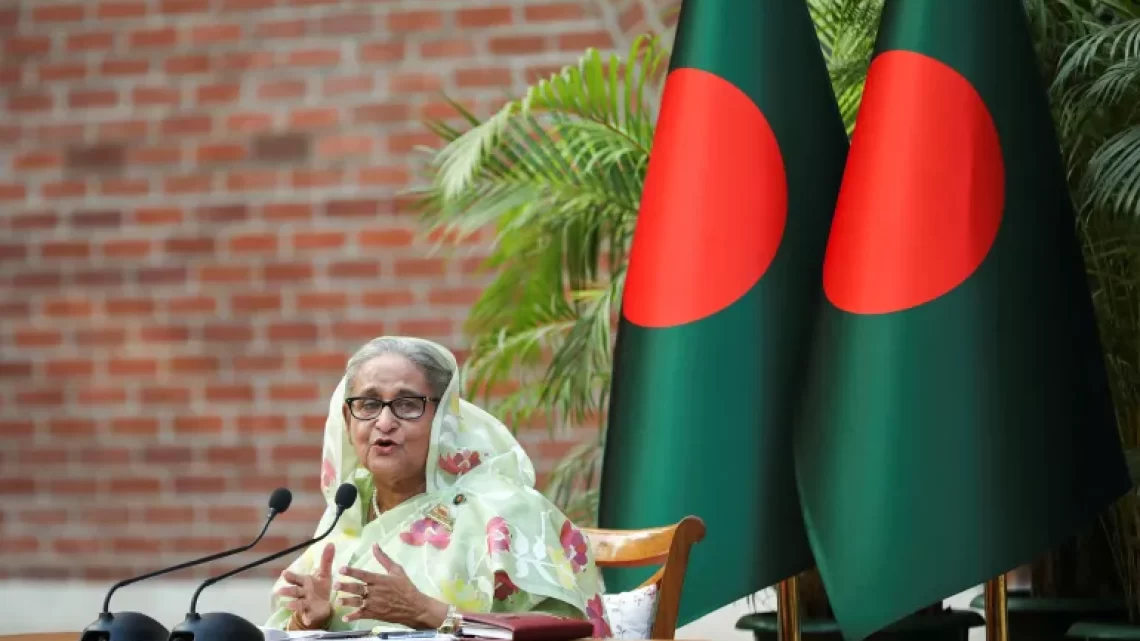
Bangladesh Joins ‘India Out’ Movement Amid Regional Turmoil
April 4, 2024The “India Out” campaign is gaining traction across South Asia, with Bangladesh joining Maldives in expressing strong dissent against India’s influence.
According to reports, Bangladesh has now joined the “India Out” movement, indicating a surge of long-suppressed anti-Indian sentiments within the country. This sentiment appears to stem from allegations of India’s interference in Bangladesh’s domestic politics, particularly surrounding the recent elections, which secured another term for Prime Minister Sheikh Hasina Wajid amidst controversy.
Bangladesh has harbored anti-India sentiments for years, but they have intensified in the last decade, reaching a peak when crowds in Dhaka celebrated India’s loss in the Cricket World Cup final in 2023. The “India Out” campaign gained momentum following Bangladesh’s recent elections, where Hasina secured her fourth term amidst significant opposition protests.
This campaign, spearheaded by the Bangladeshi diaspora and opposition parties, encourages citizens to boycott Indian goods. The parallels between this movement and the Maldives’ similar initiative are striking. In the Maldives, President Mohamed Muizzu capitalized on anti-India sentiment to secure power, leading to India’s withdrawal of military personnel and surveillance aircraft from the country after Muizzu’s orders.
The growing discontent towards India in South Asia, particularly in countries like Bangladesh and the Maldives, reflects a broader trend of frustration with perceived Indian interference in regional affairs. This sentiment is fueled by perceptions of India’s heavy-handed approach to influencing political processes and decisions in neighboring countries.
The timing of the “India Out” campaign in Bangladesh, following contentious elections and amidst ongoing political turmoil, underscores the potency of anti-Indian sentiments as a rallying cry for opposition forces. It represents a challenge to India’s traditional dominance and influence in the region, as neighboring countries assert their autonomy and push back against perceived external meddling.
Furthermore, the active involvement of the Bangladeshi diaspora in driving this movement highlights the transnational nature of anti-India sentiment and the interconnectedness of communities across borders. The diaspora’s mobilization underscores the significance of digital connectivity and social media platforms in galvanizing support for such campaigns and amplifying voices of dissent.
India’s response to these developments will be crucial in shaping its relations with its South Asian neighbors. While India has long pursued a policy of regional hegemony, these growing expressions of discontent pose a challenge to its influence and raise questions about the sustainability of its approach. Moving forward, India may need to reassess its foreign policy strategies and prioritize building constructive, mutually beneficial relationships based on respect for sovereignty and non-interference.
To conclude, the emergence of the “India Out” campaign in Bangladesh, coupled with similar sentiments in the Maldives, underscores the complexity of India’s relationships within its South Asian neighborhood. It signals a shifting dynamic wherein neighboring countries are asserting their autonomy and pushing back against perceived Indian interference. As these sentiments continue to gain momentum, India faces the challenge of recalibrating its approach to regional diplomacy to adapt to this evolving landscape.

